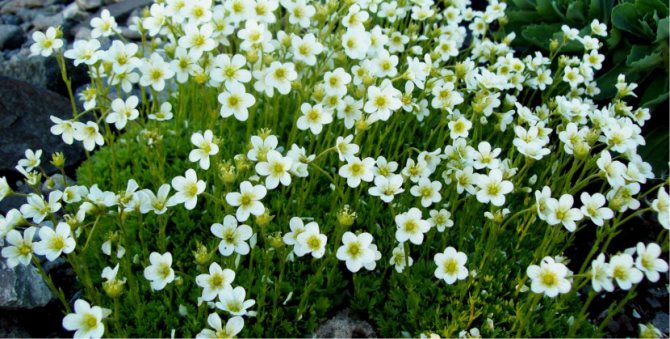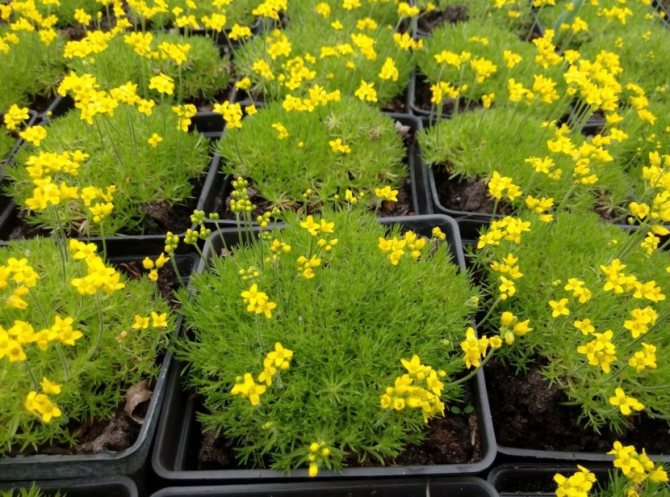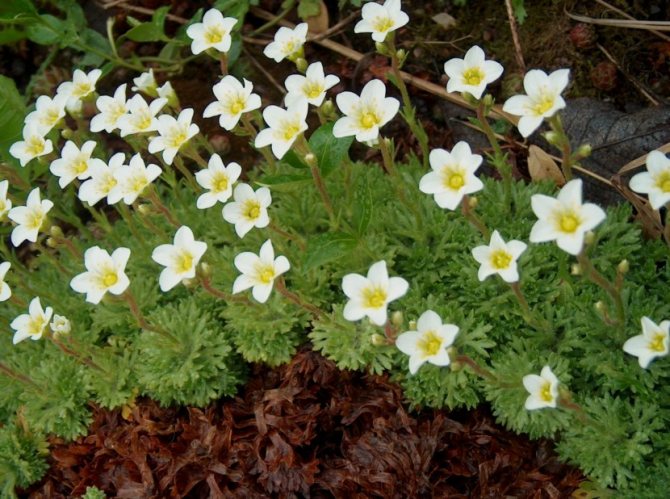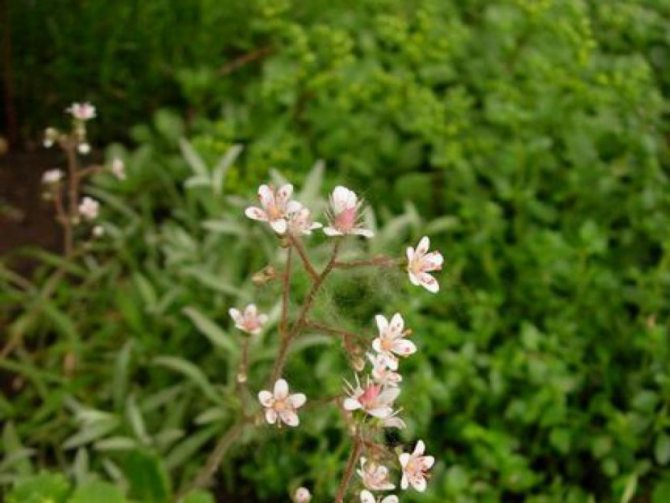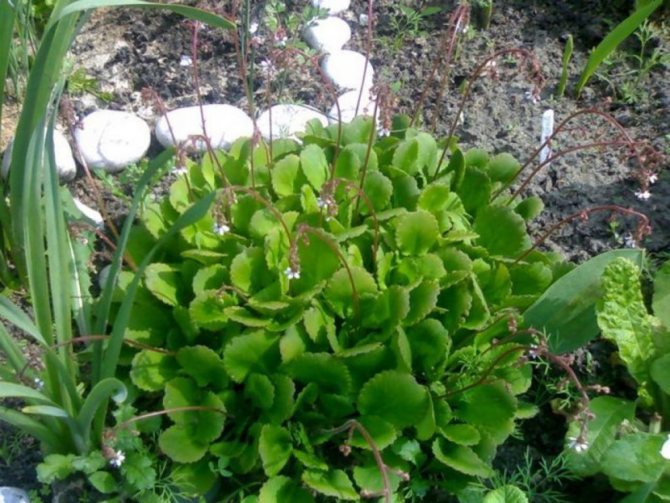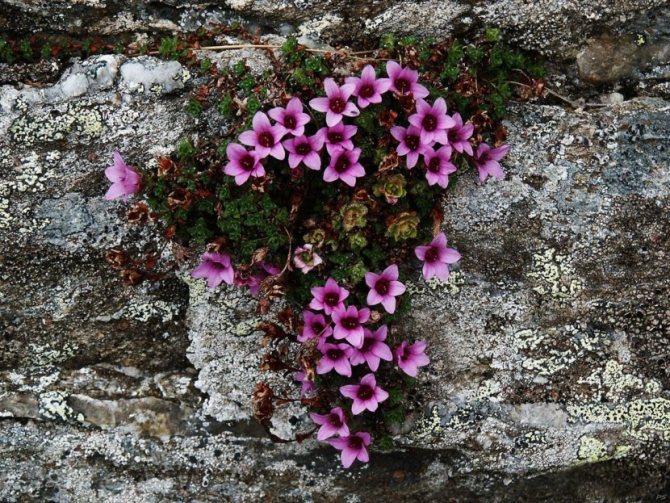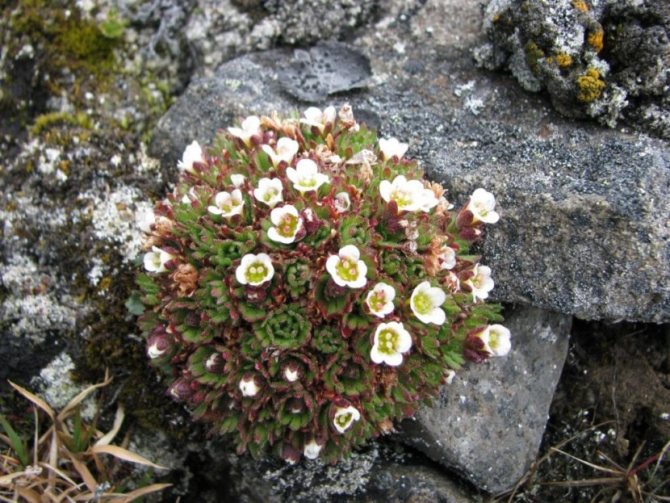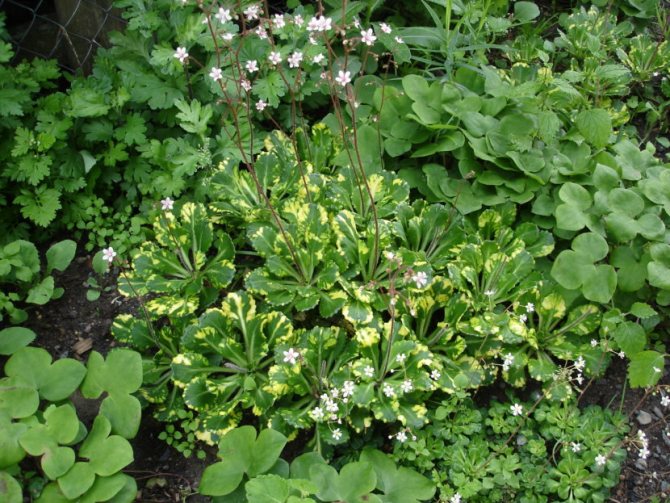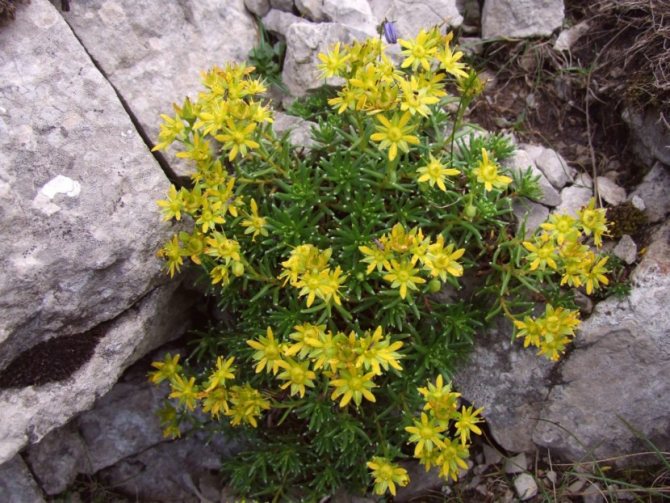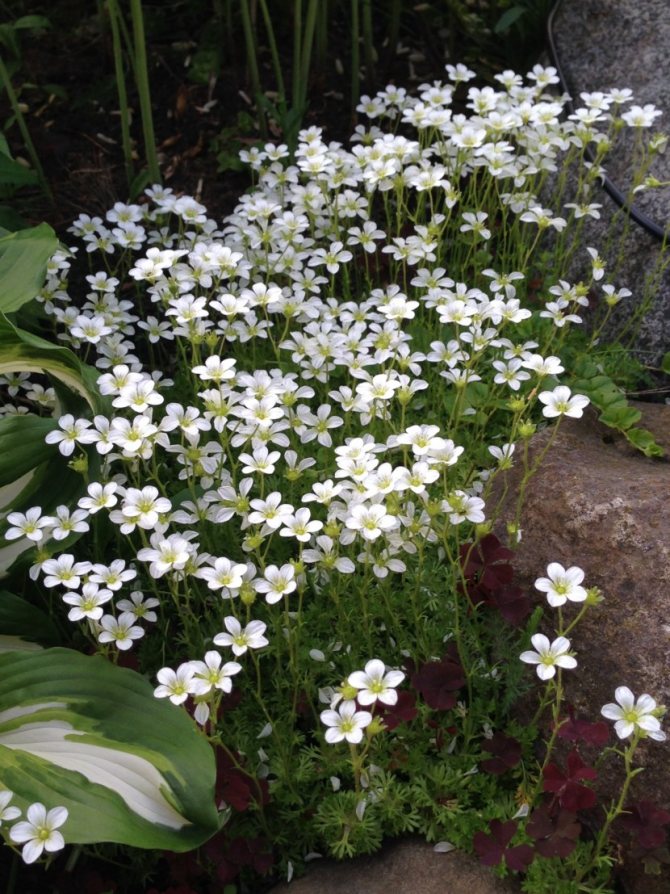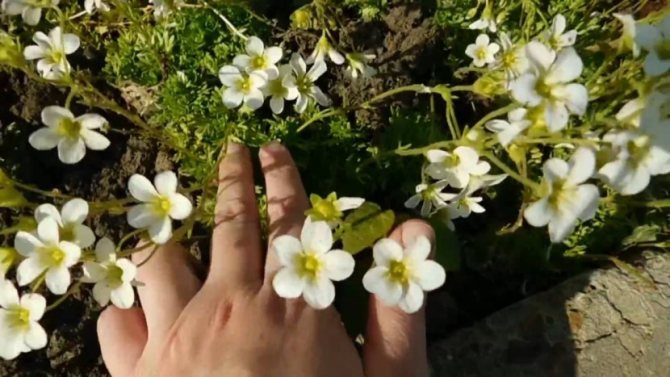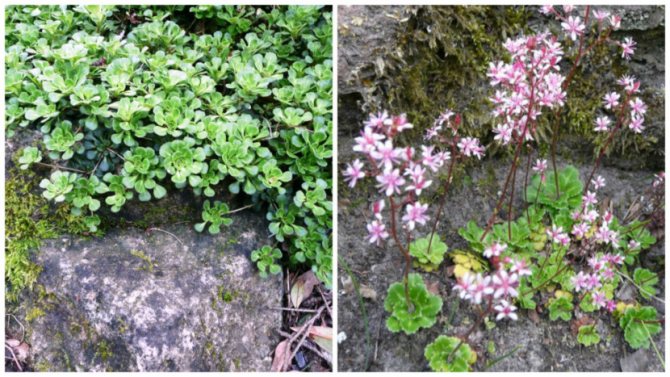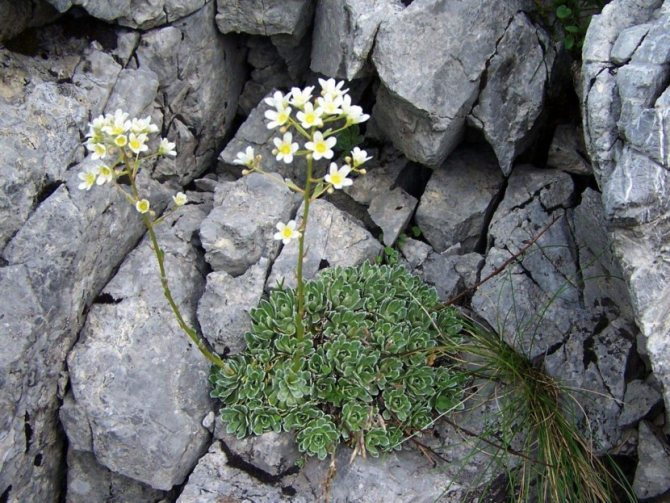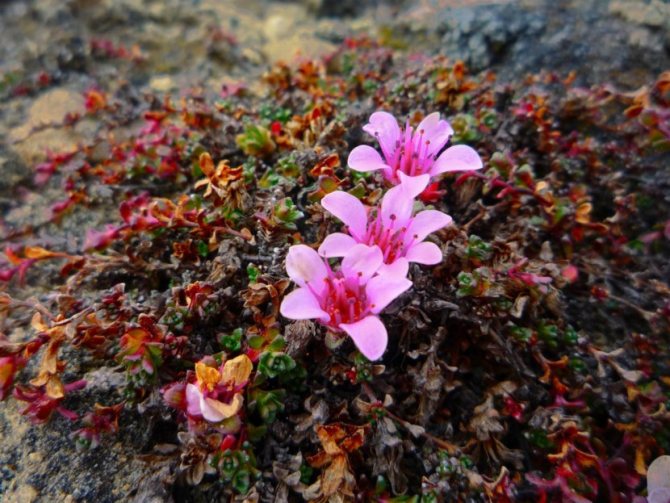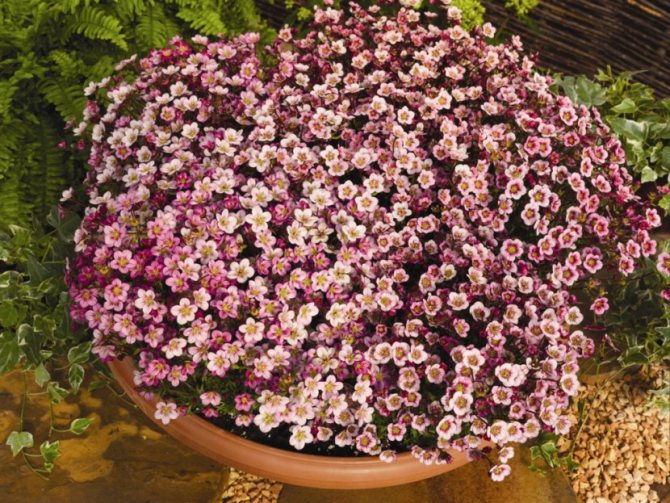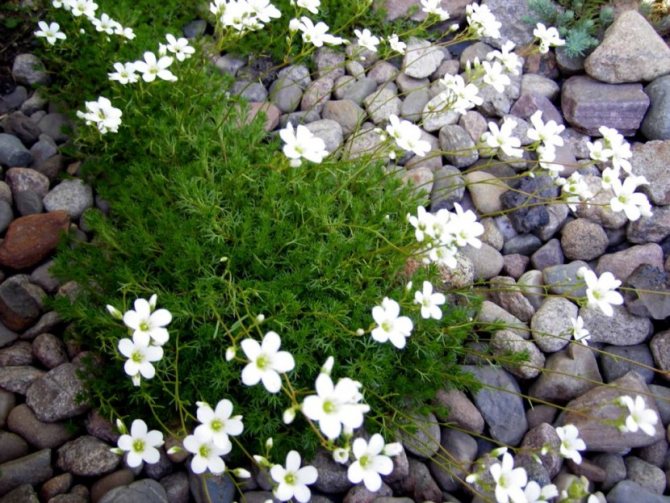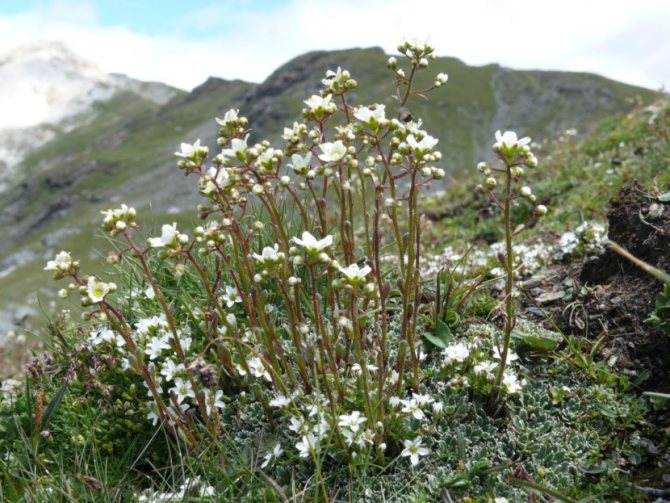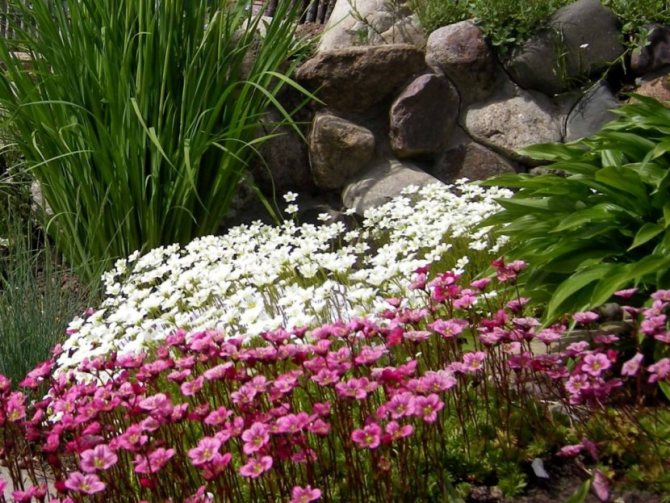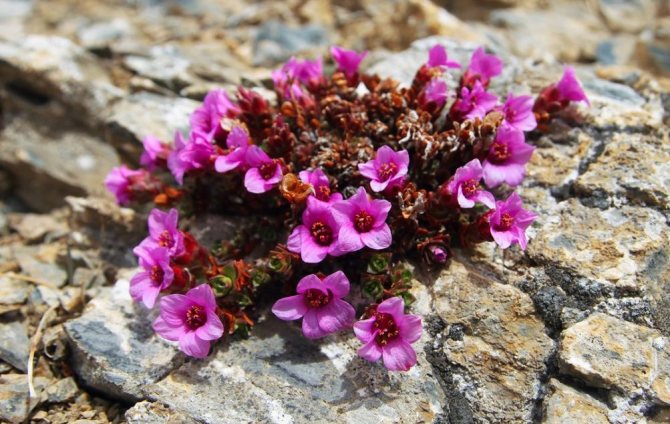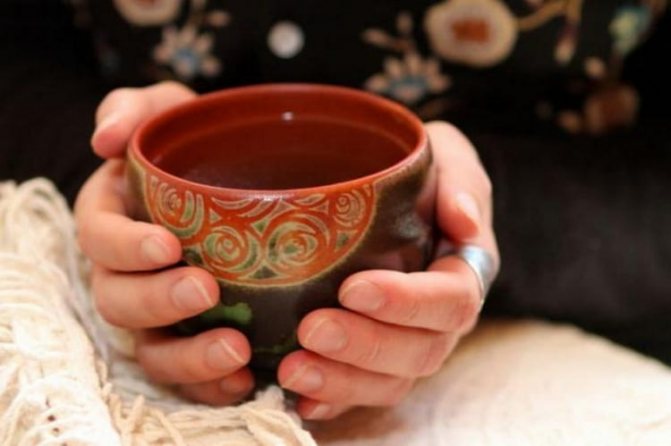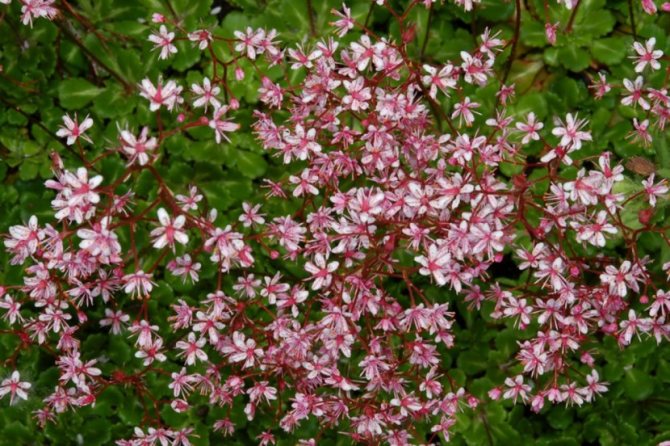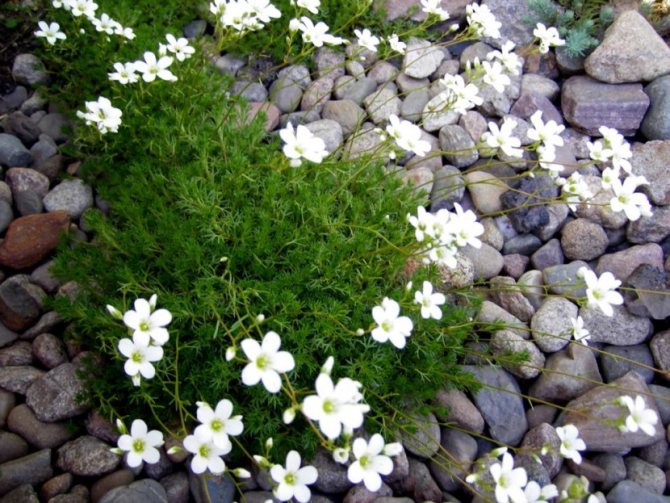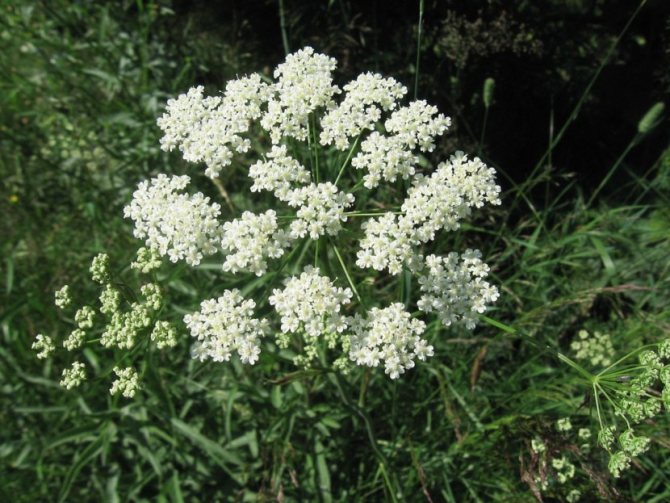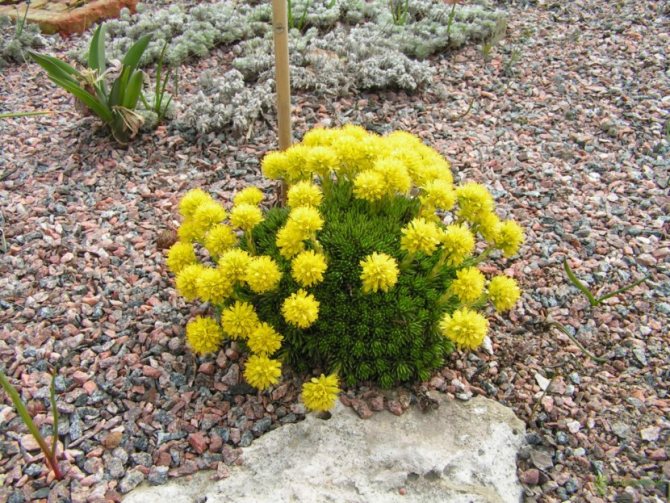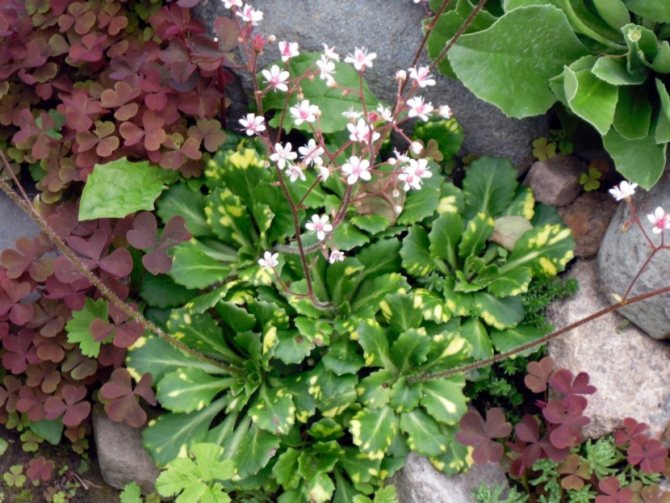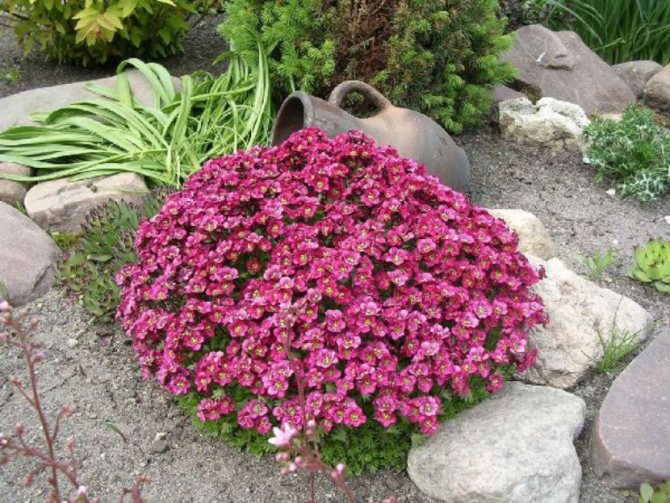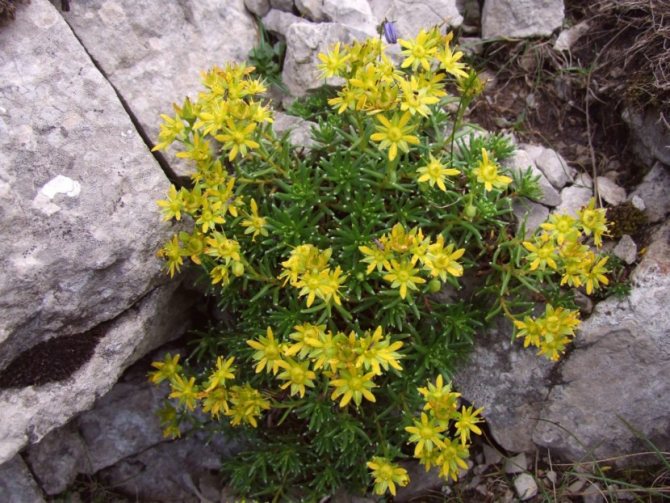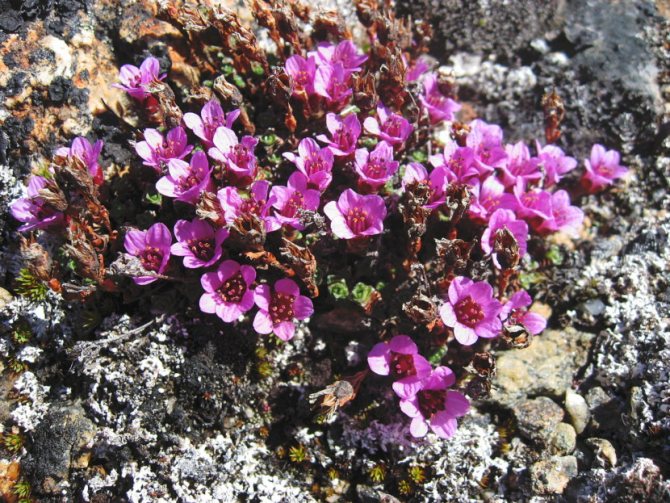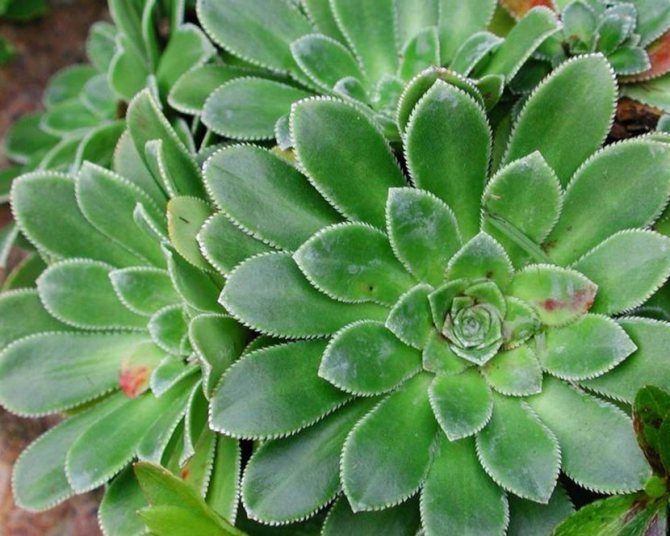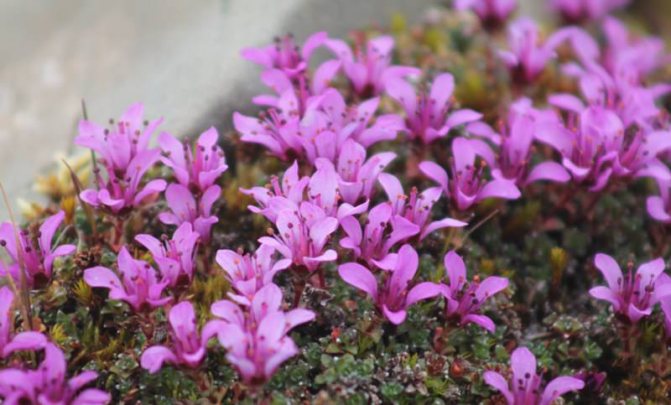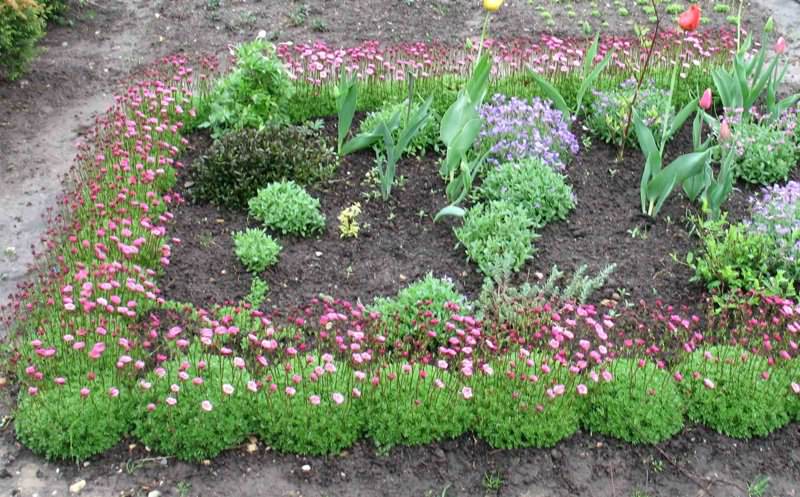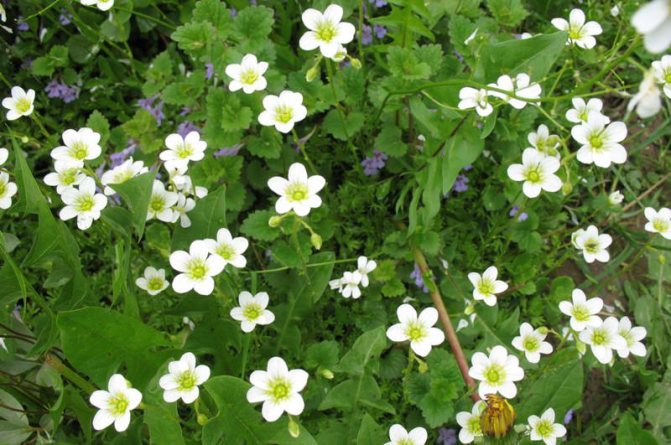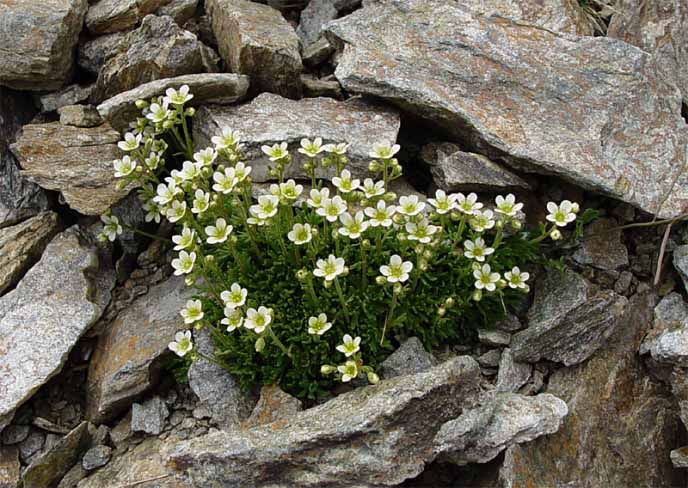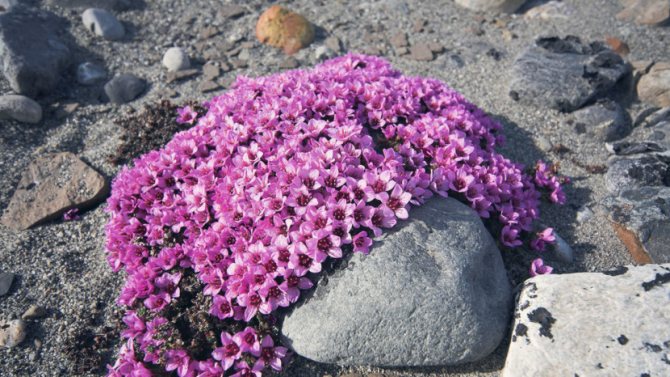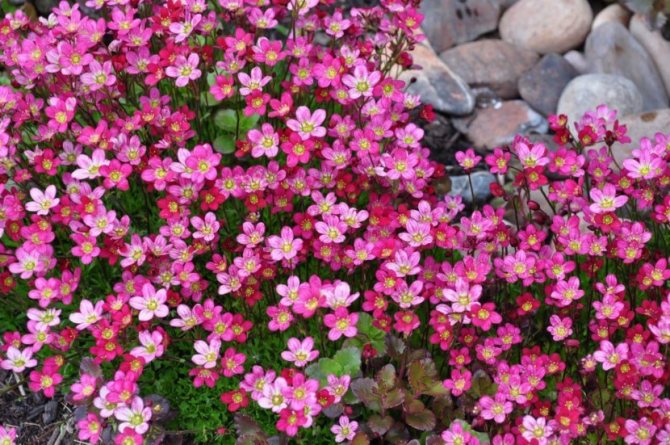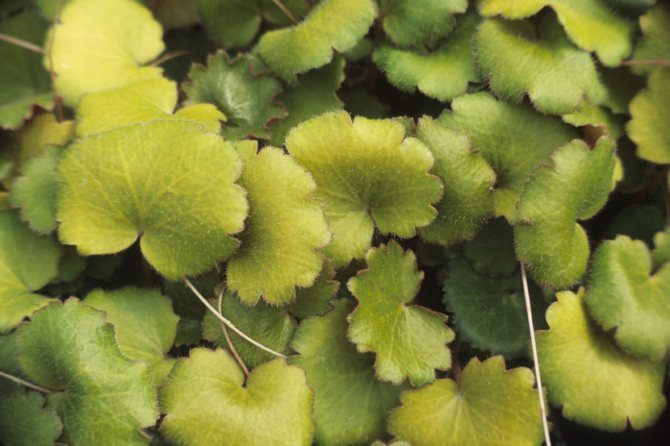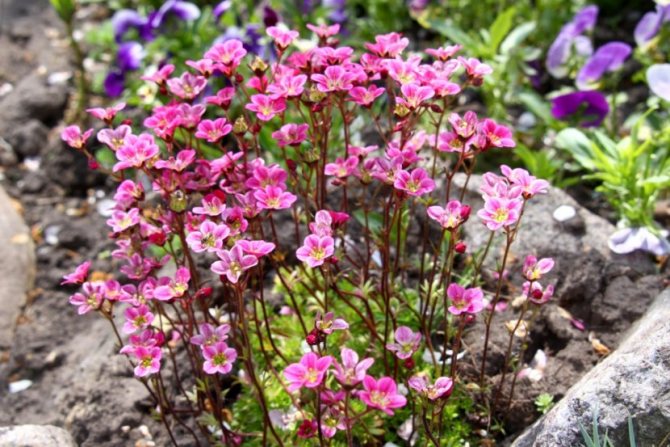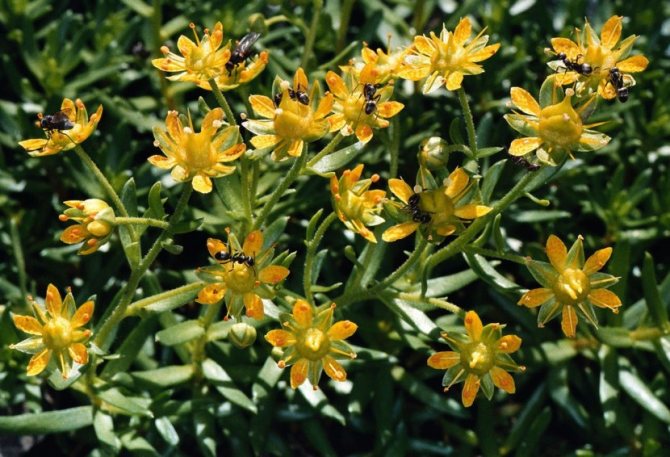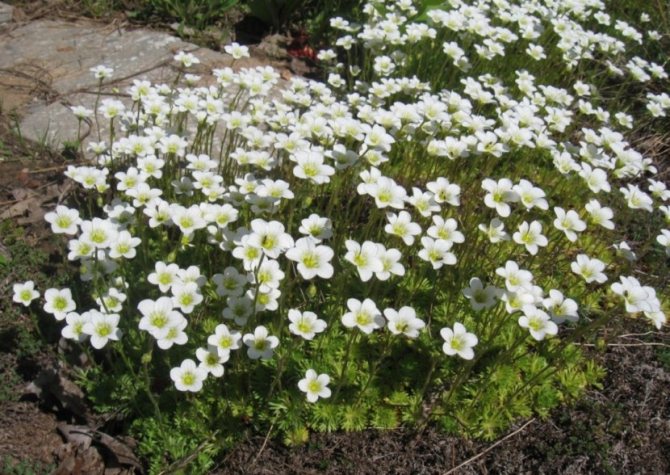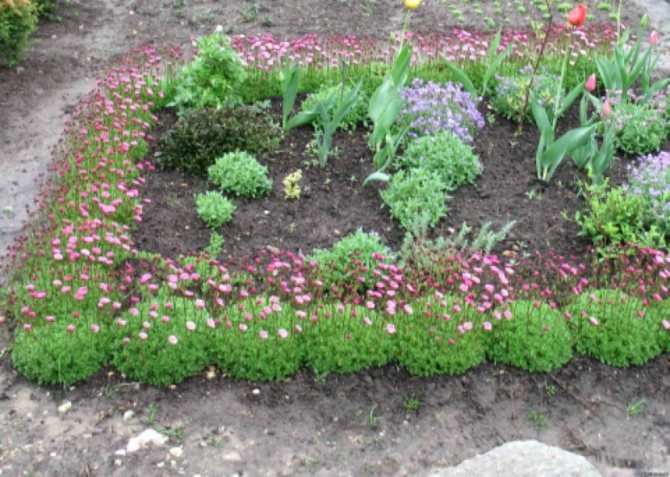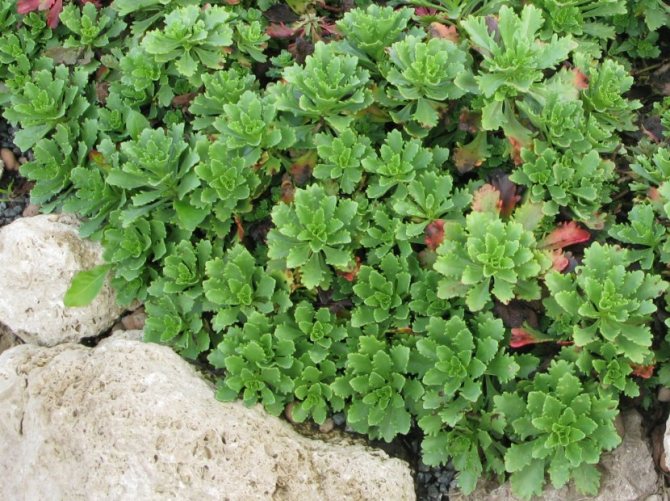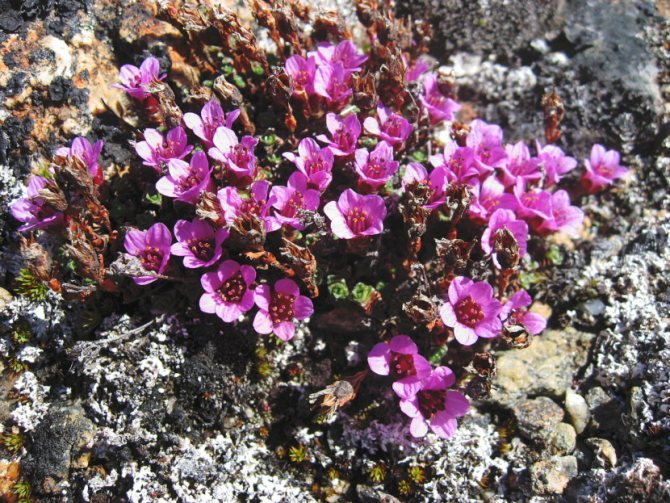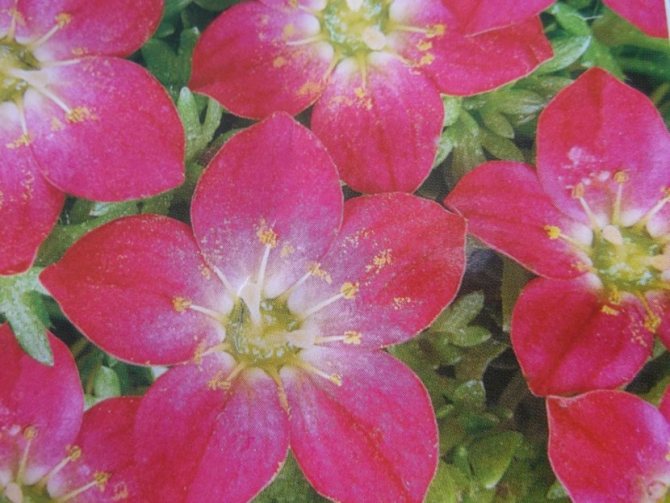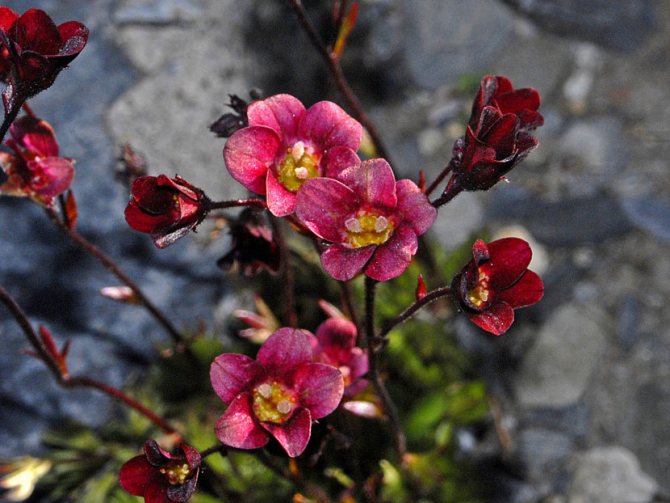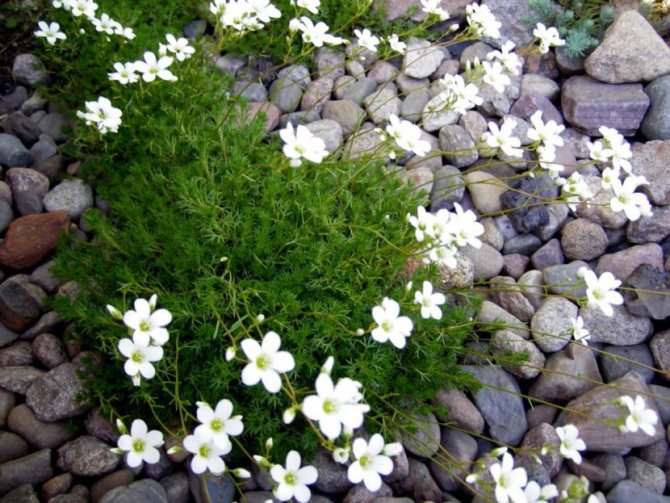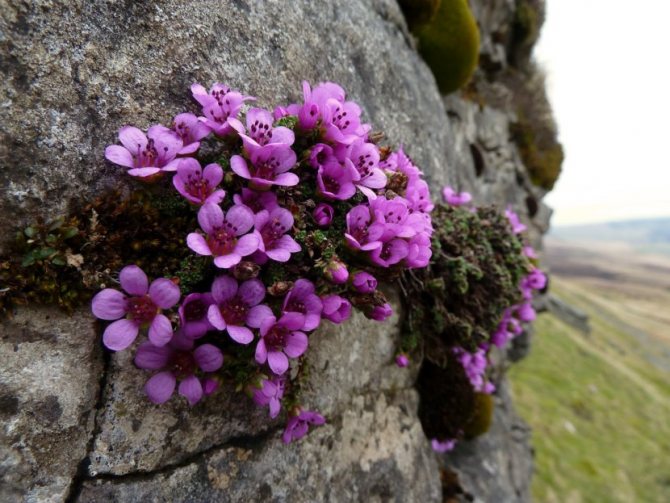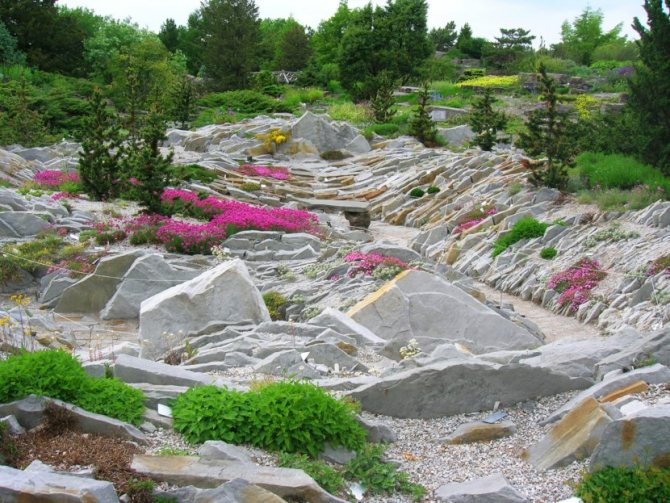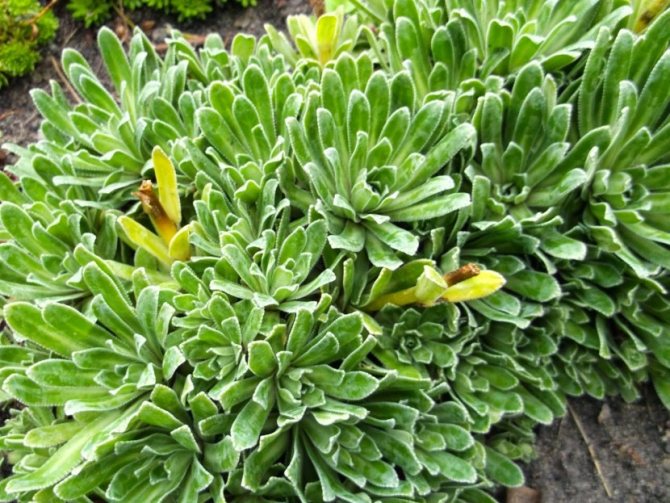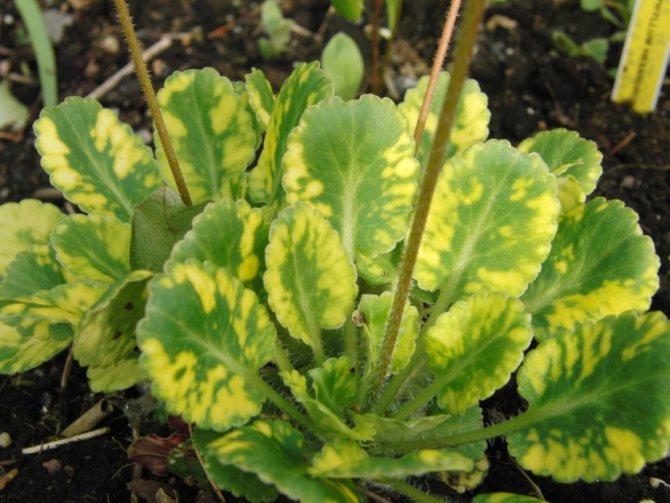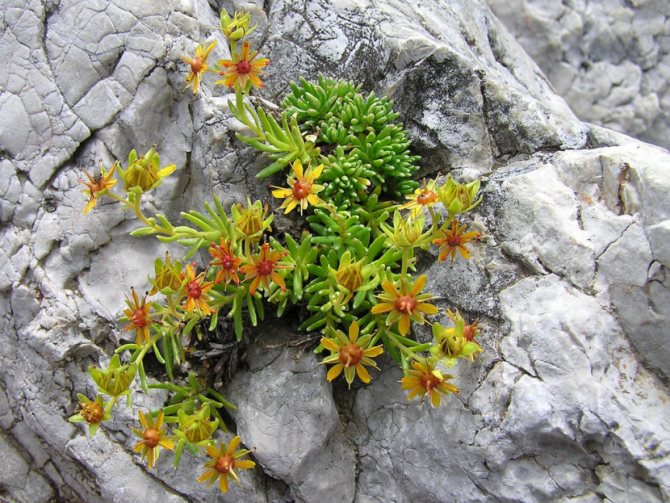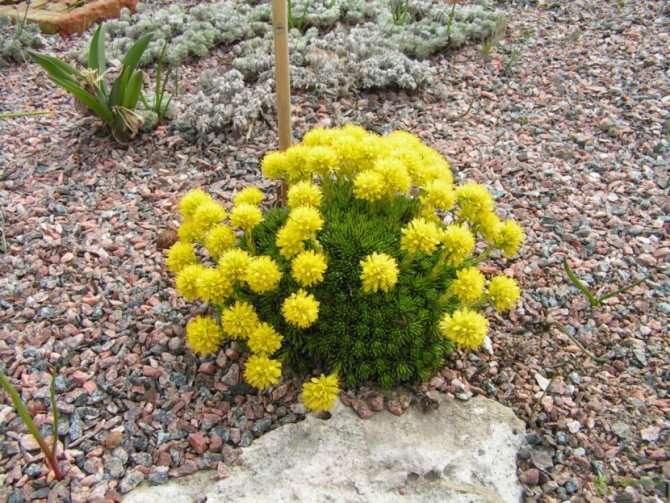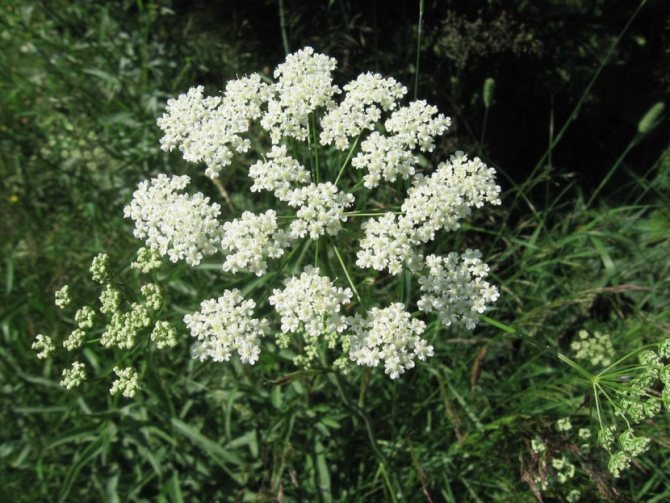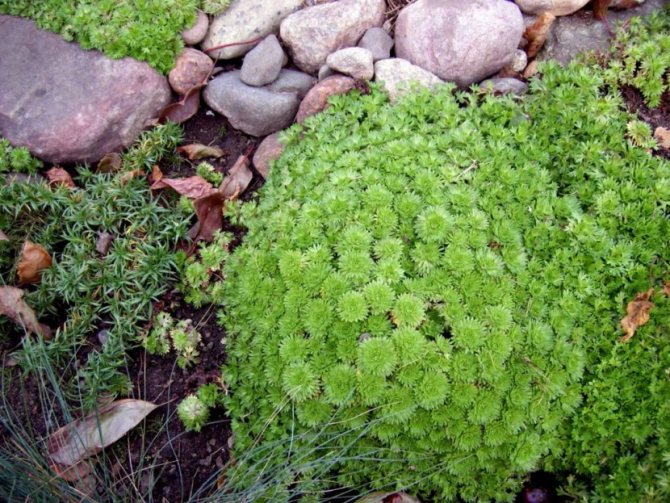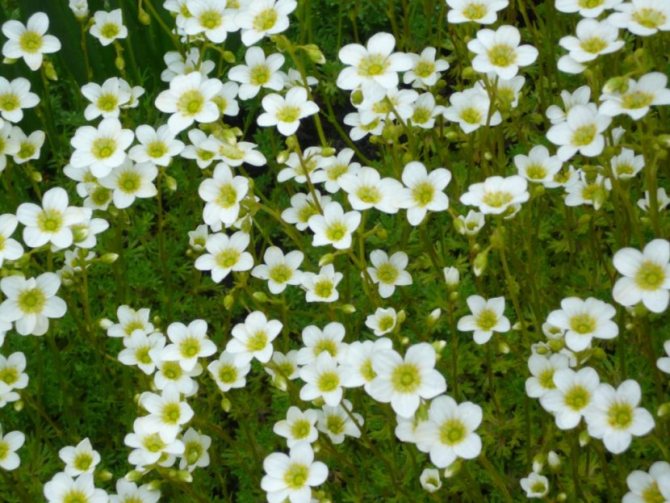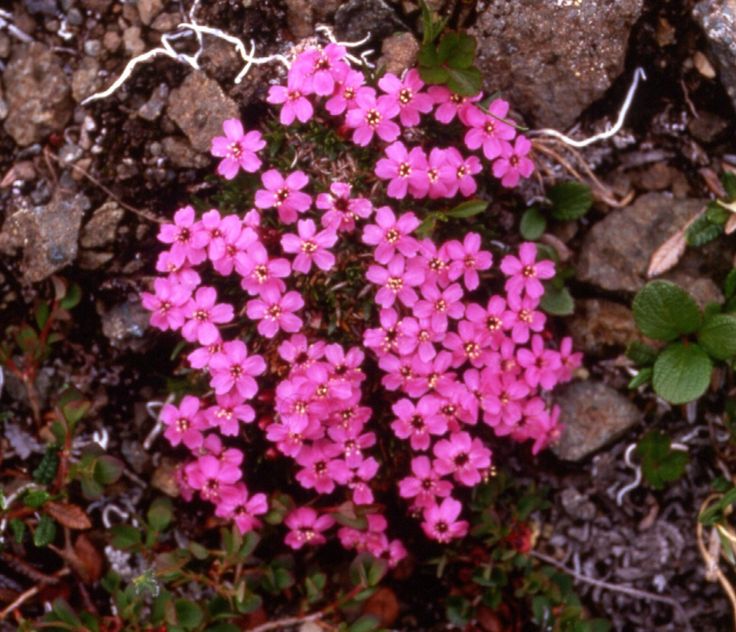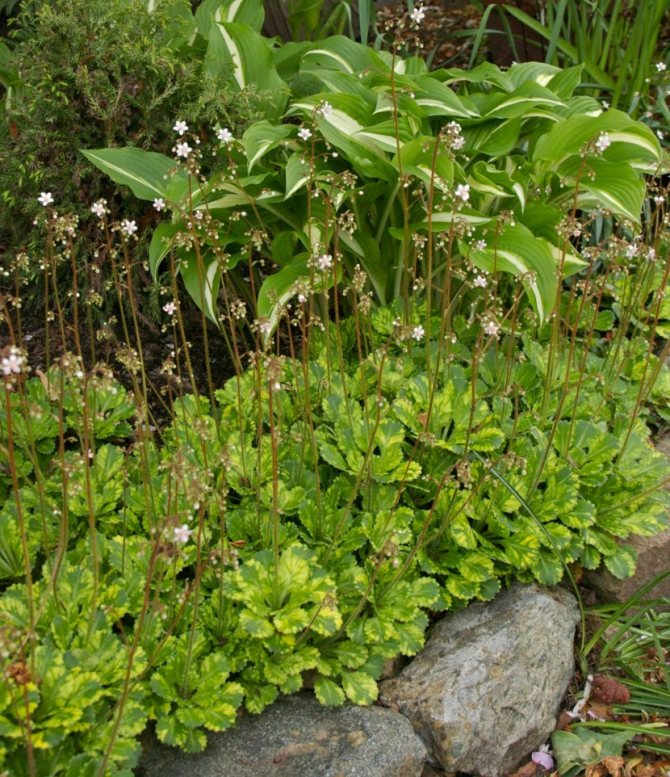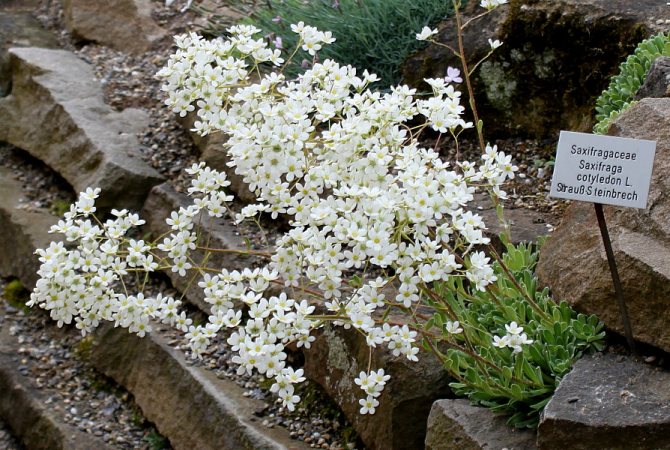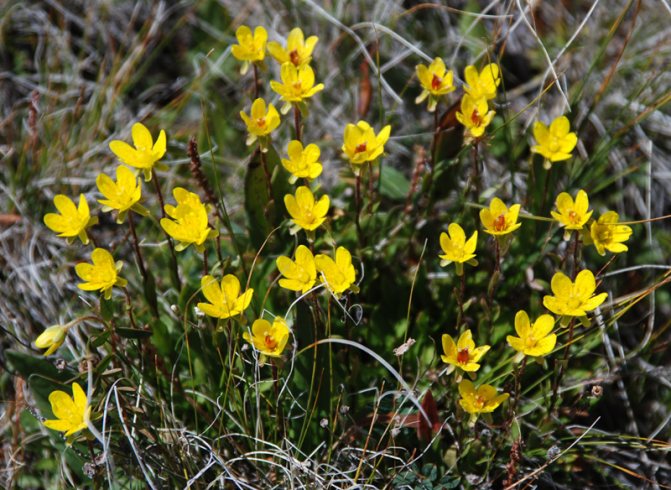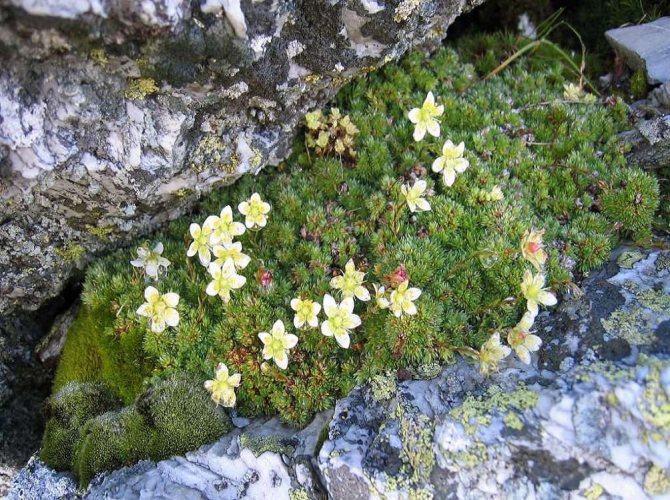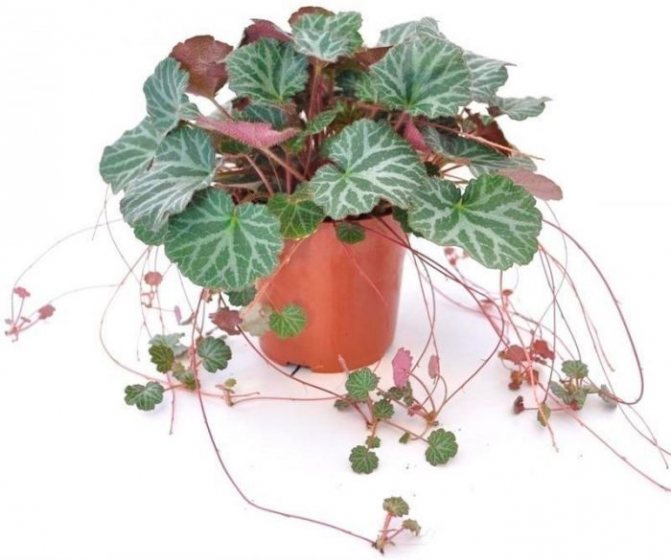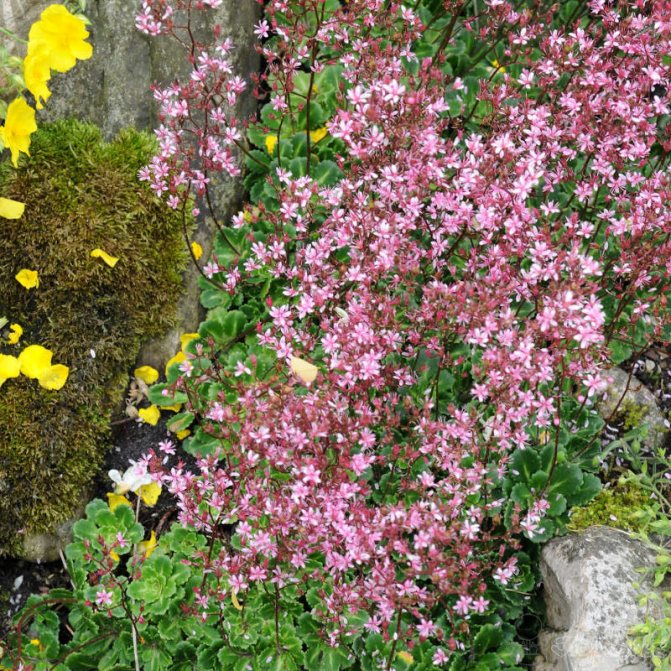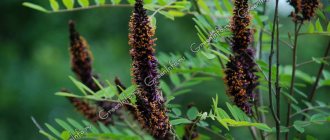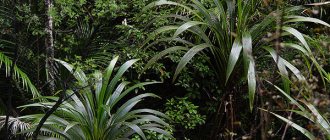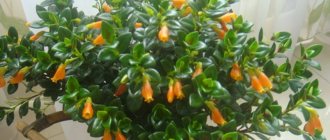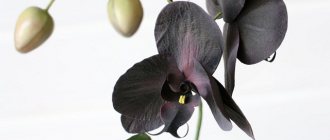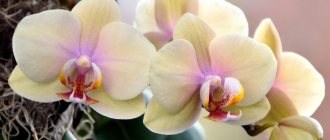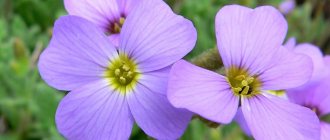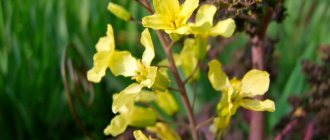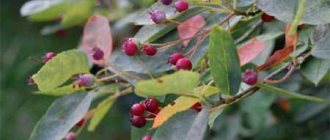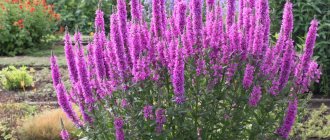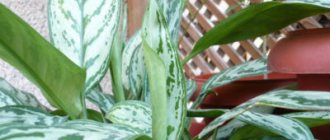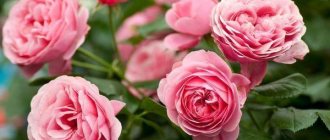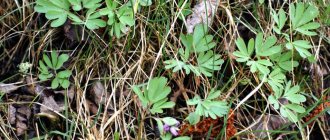Saxifrage is a herbaceous plant that can be both annual and perennial. It is often used in landscape design. The saxifrage forms a solid carpet. The flowering period occurs in late spring and all summer.
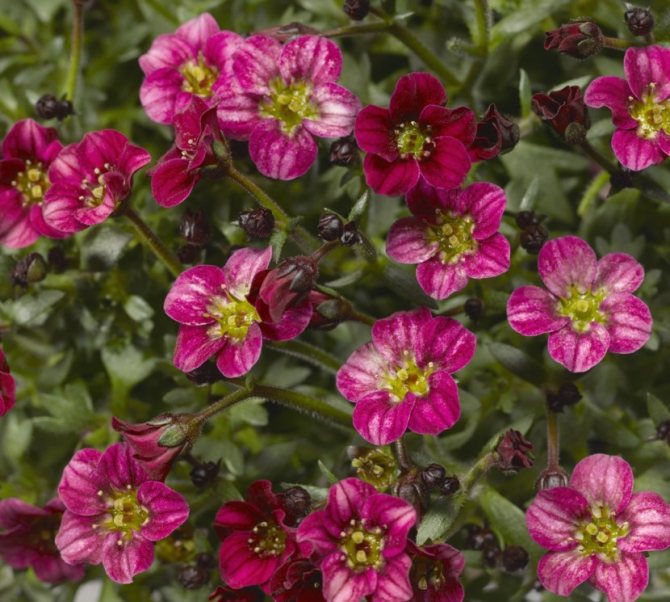
There are approximately four hundred varieties of saxifrage. This plant is quite unpretentious. Saxifrage is common in Eurasia, Central America and the mountainous parts of the African tropics.
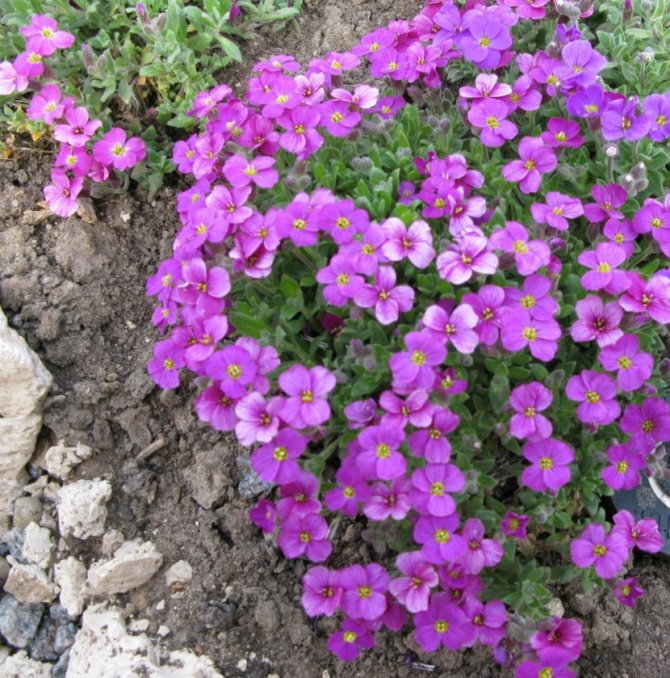

The size of the plant can be different: from 5 cm to 0.7 m. It can form a carpet of different density. Saxifrage belongs to the rhizome type of plants. The root rosette is formed by leaves, which can have a gray tone, since they differ in the property of lime accumulation.
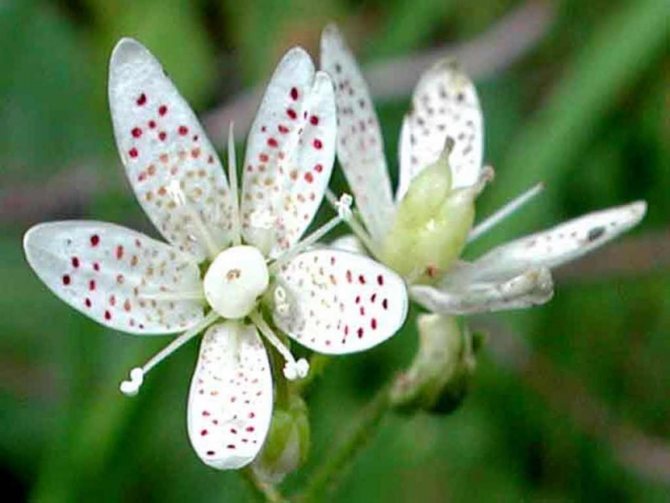

Flowers have five petals and can be of different colors: white, pale pink, lilac, sunny yellow. There are varieties of saxifrage with bright scarlet flowers.
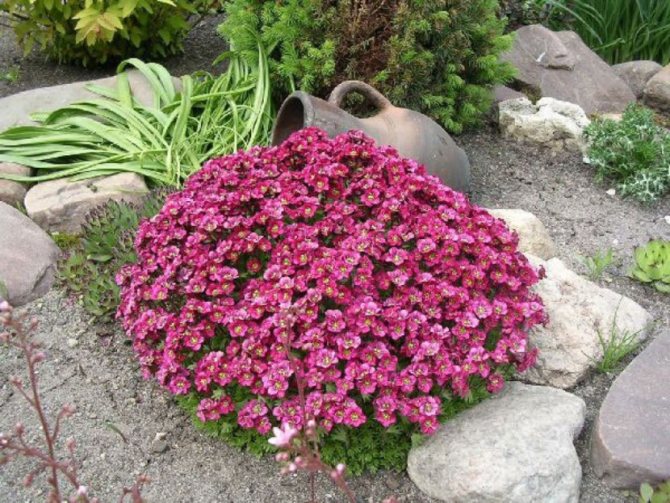

This plant is used both to decorate the local area and to keep it in the house.
Positive qualities and varieties of saxifrage
The positive qualities include simplicity in care and resistance to cold. Pollination of some varieties is due to insects, others can self-pollinate.
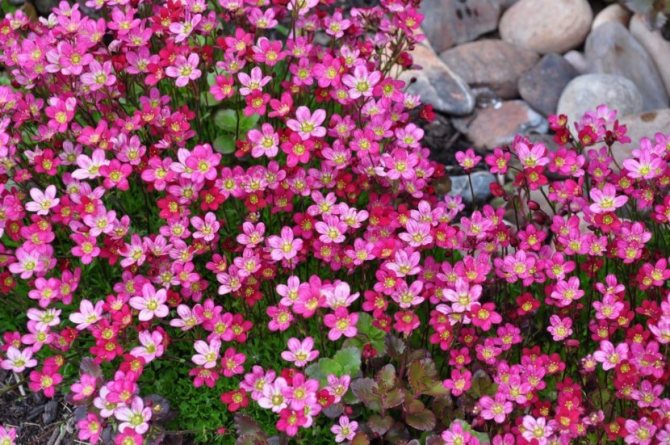

The plant will delight you with the tenderness of its flowers, leaves of various configurations. All this adds a special appeal to the saxifrage.
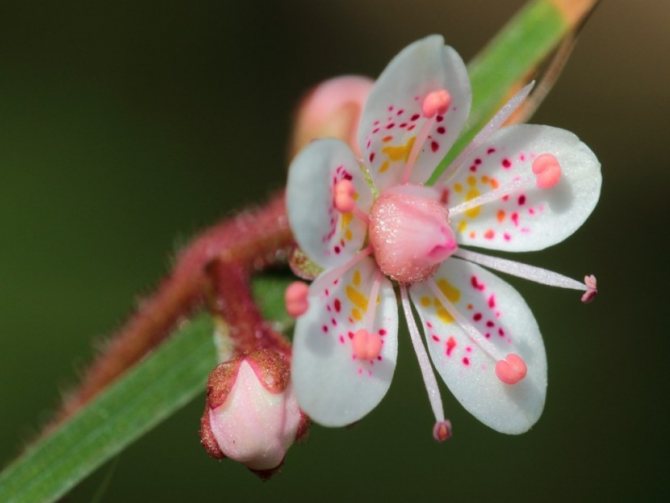

This plant is perfect for beginner gardeners - amateurs. It is unpretentious. Planting and caring for saxifrage is available to everyone. And the result will pleasantly amaze you.
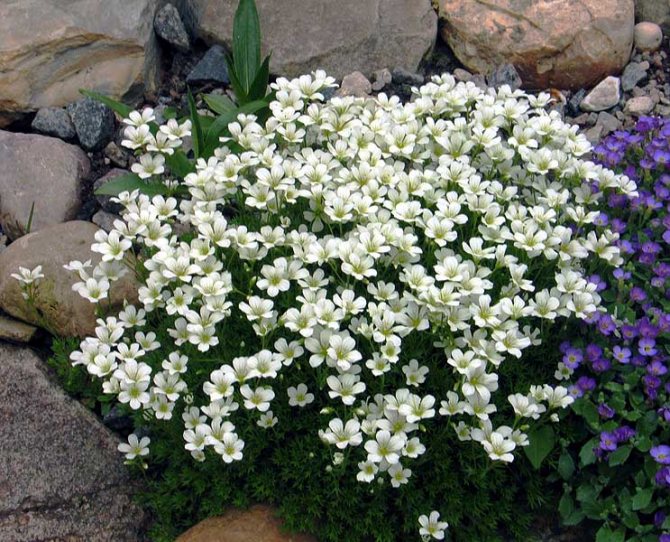

The saxifrage flower can grow in shaded areas. This is its undoubted plus, because it is often difficult for indoor plants to provide sufficient illumination.


The most popular varieties are Arends' saxifrage, Bedrenc saxifrage, turf and indoor saxifrage.
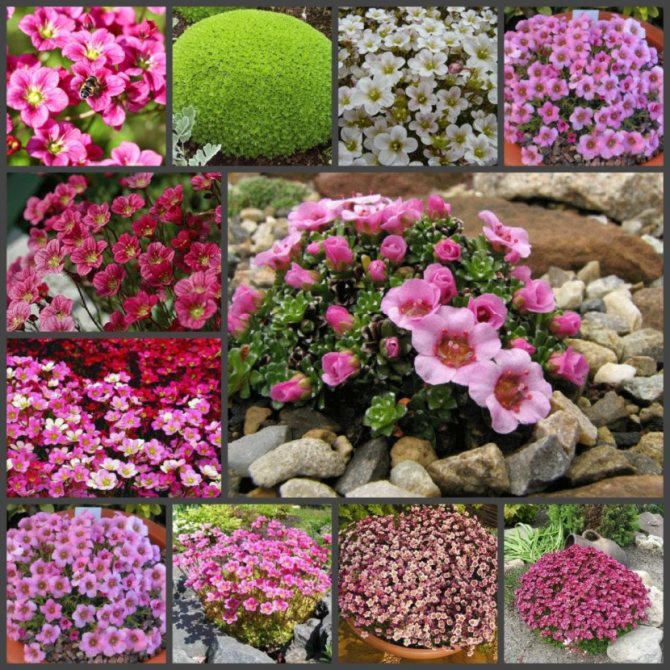

Application
Saxifrage of different types can be used in a wide variety of combinations, in a sunny or semi-shaded position. Particular care should be taken of the alpine species, they are more demanding and will not cope with an ordinary flower bed. In their case, an imitation of the natural habitat, a secluded position should be created. In the case of Arends saxifrage, for example, this does not cause any problems.
Saxifrage is used mainly for:
- planting in rock gardens;
- near the walls;
- in the spaces between the paving slabs;
- on slopes and other uneven ground;
- some species grow well in containers on the balcony.
Alpine inaccessible rocks and ravines are a natural habitat for saxifrage. The beauty of these plants can also be admired in the garden if the appropriate conditions are created, similar to natural ones. These are a variety of plants, representatives of which are grown in the open field and at home. In a variety of species and varieties, you can find plants that prefer moisture, which will grow well by the pond. The greatest rarities of the genus include alpine species, more demanding, but rather rare in gardens.
How to grow a saxifrage by seed method? Planting and leaving
For growing saxifrage by seed, it is best to use closed soil. This is a rather small plant, therefore it is preferable to mix the seeds with river sand and spread over the leveled ground.
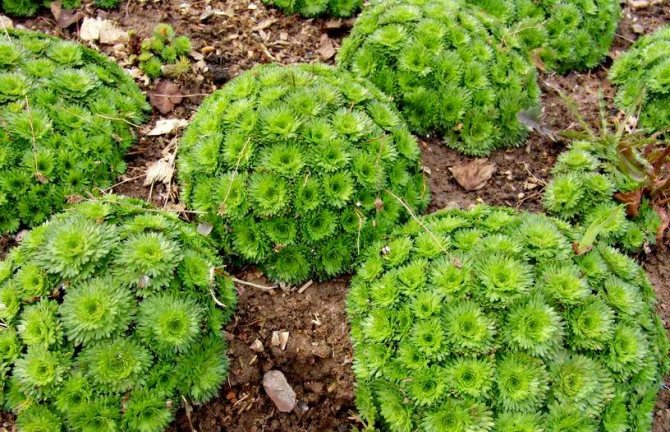

It is advisable to compact the soil a little before this. A mixture of peat, sand and earth can be used as a soil. But before planting, saxifrage seeds need special treatment. They must be put in a container, lightly sprinkled with sand and removed in the cold for 14 - 21 days.
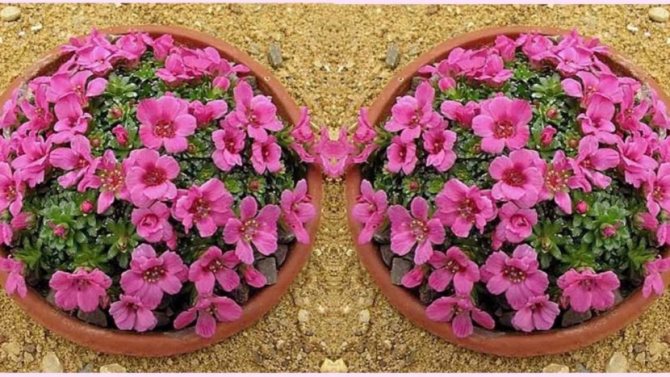

Then the container must be covered with foil or glass and placed in a lighted room. The first shoots can be seen after 12 days. The grown seedlings are transplanted into pots.
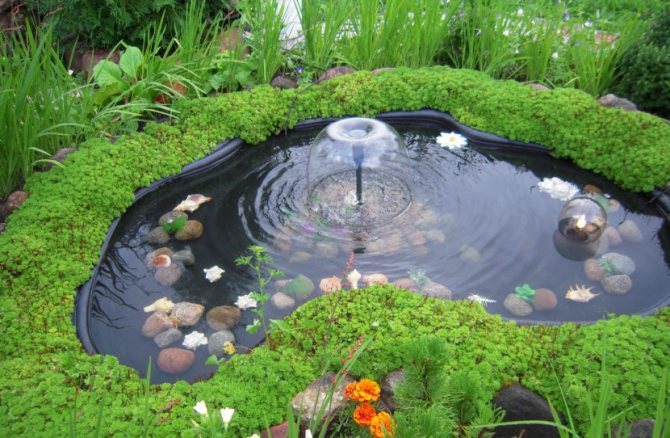

Seedlings are planted outside in early summer. Remember that saxifrage obtained from seeds will only bloom next year.
Botanical characteristic
Saxifraga L. is a genus of plants belonging to the Saxifragaceae family. It includes numerous, very diverse, usually rosette perennials, which owe their attractiveness to flowers and very often to original foliage.
The genus includes about 440 species, growing mainly in the Northern Hemisphere: (125 species in Europe), Asia, North America. In the south, the genus reaches Thailand in Asia, Ethiopia in Africa and the Andes in the American continent. Most of the species are found in the mountains and on rocky slopes. Many varieties are grown as ornamental plants.
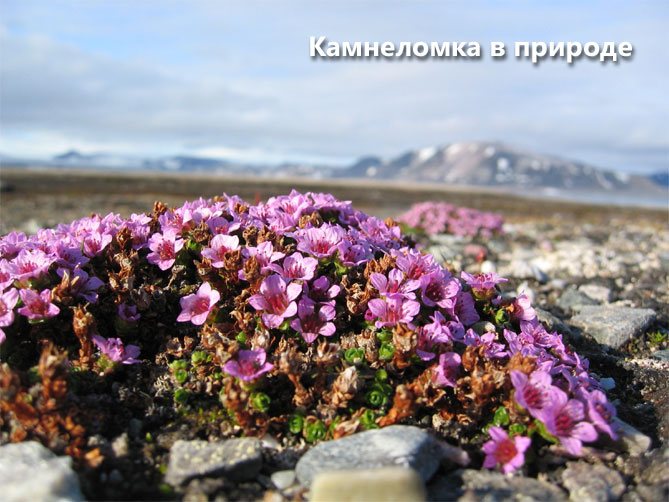

It used to be thought that saxifrage growing on rocks caused them to split, hence the scientific name from Latin words:
- saxum = rock;
- frango = to break.
Saxifrage is also known as tear-grass.
Wild species, also found in our country, are characterized by round, kidney-shaped leaves located on a stem 20-30 cm long, and white flowers that appear in May and June.
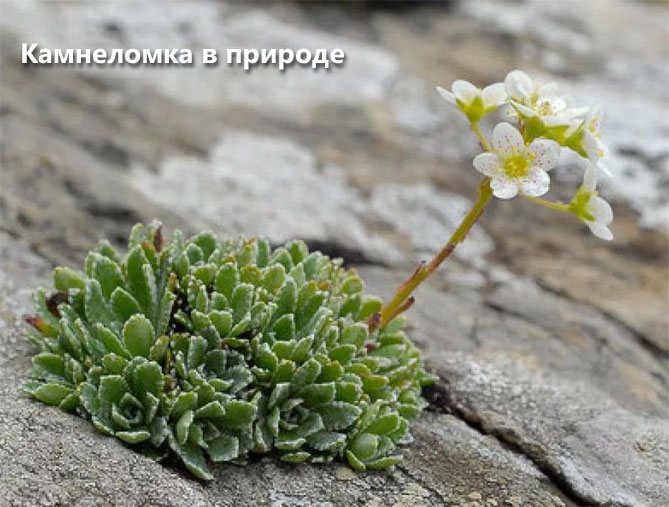

Morphology
- These are small, up to 30 cm tall, annuals and perennials, often forming a dense lawn.
- Leaves usually concentrated in terrestrial rosettes, often leathery. Leaf shape is rounded, with a heart-shaped base.
- Flowers saxifrages are located on peduncles growing in loose clusters, tops or panicles. There are 8-10 stamens in a flower.
- Fruit - multi-seeded bag. The seeds are very small.
Photo of saxifrage
Views
The following decorative types of Saxifrage are most common:
- Berdenets saxifrage - a perennial variety with spectacular feathery leaves and an umbellate inflorescence consisting of small white flowers. It is grown not only for the sake of beauty, but also as a medicinal plant.
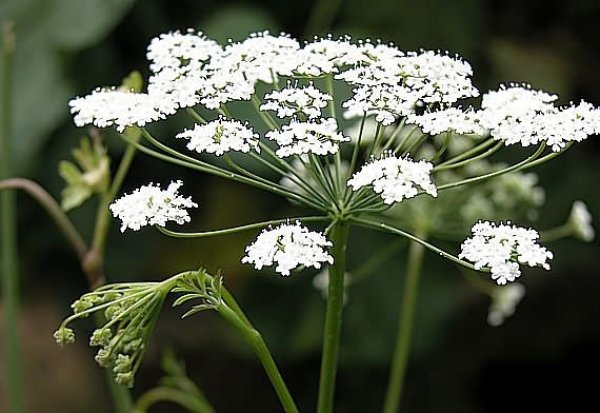

- Arends - a popular undersized hybrid that grows well in the middle lane and even in northern latitudes. At the time of flowering, it forms a thick colorful carpet of pink or bright red flowers in the garden. Suitable for indoor cultivation.
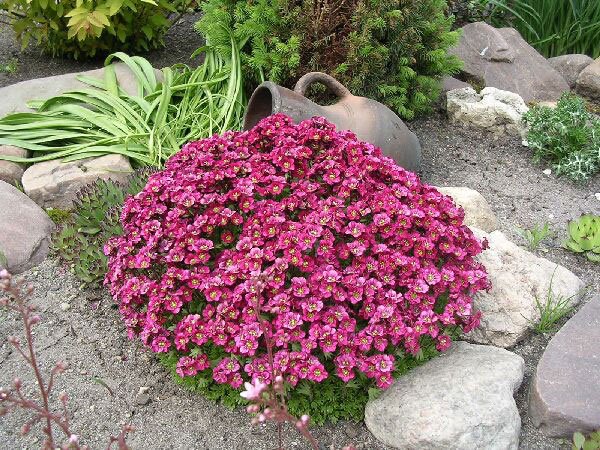

- Wicker or scion - an interesting perennial plant from 20 to 50 cm in height. Differs in the presence of long filamentous rooting lashes. The leaves of the saxifrage, braided in a rosette, are rounded in shape, having a heart-shaped base and crenate-lobed edges. The upper side of the leaf plate is decorated with light silvery veins on a green background, and the lower one is interesting with a reddish tint.
The plant is also distinguished by an unusual shape of flowers with petals of different lengths of white and reddish colors. This type of saxifrage is often grown in indoor culture. Thanks to the airy hanging stolons, the plant is popularly called the "hair of Venus", "beard" or "spider".
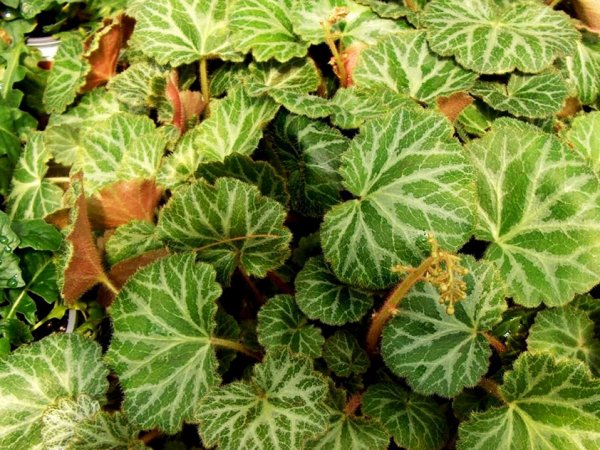

- Panicled or eternally living - a miniature plant, reaching a height of no more than 8 cm. It differs from its relatives in small fleshy leaves with jagged edges of blue-green color, growing from a dense rosette and forming dense thickets.At the edges of the leaves, there is a protruding lime. The panicle inflorescences are formed from yellow, red or white flowers with red dots. The panicle saxifrage is usually planted in crevices between stones on the slopes of a rock garden, necessarily providing the plant with humus soil.
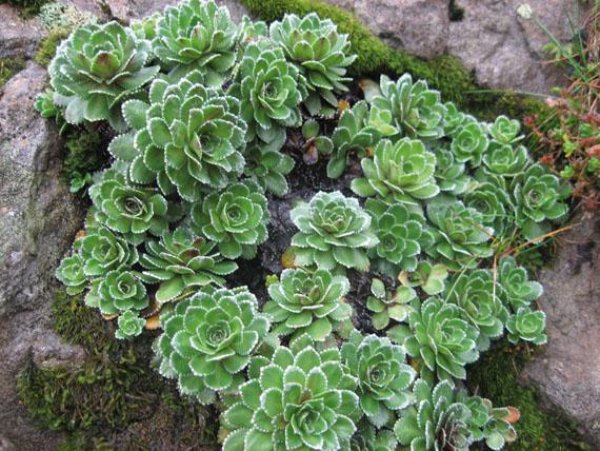

- Cesium, otherwise syzolic - herbaceous perennial with branching shoots and a thin rhizome. Growing up, it forms dense turf. Delicate white flowers bloom on erect peduncles. Flowering begins in July and early August. Cesium is the most capricious variety of saxifrage that only an experienced florist can tame.
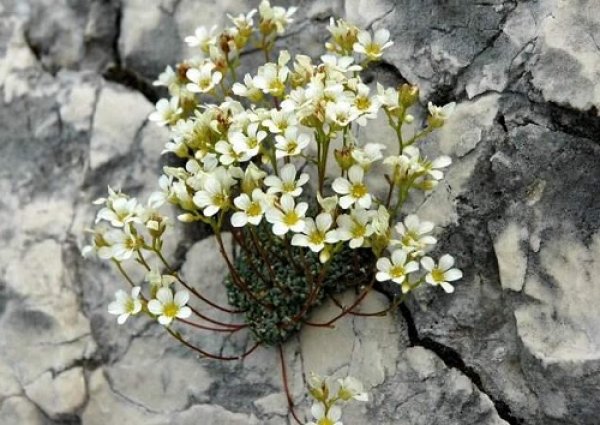

- Stiff-leaved - a variety with creeping stems, forming a loose pillow on the stones with a height of 2 to 20 cm. Hard leaves with denticles along the edges have an oblong linear shape. The plant blooms in June or July with yellow single flowers with red blotches. For good development, it requires a soil rich in calcium.
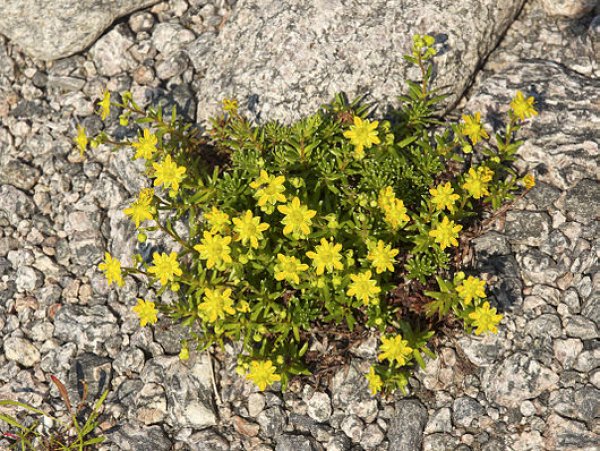

Reference! The saxifrage looks great in the garden against the background of dwarf thuja and cypress. You can complement the charming composition with plantings of carnations, gentian and breakthroughs.
Use in landscape design
In nature, saxifrage is able to break through cobblestones and stones. And the view is very original and spectacular.
Designers did not ignore such a miracle and use it:
- in stone compositions;
- when making rockeries;
- in rock gardens;
- in retaining walls;
- for decorating borders.
Plant a plant single bushes or solid carpet, which can be a decoration of the whole meadow.
An enchanting sight is planting plants in hanging basketswhen the green crown with flowers falls down.
Growing from seeds
- Seeds are planted in mid-spring.
- A light soil (peat mixture), slightly moistened, is prepared.
- The pot is filled with a little earth.
- The seeds are poured out onto the surface and stored in a cold place or in a refrigerator.
- It is not necessary to sprinkle them with earth, just press lightly with your palm.
- After three weeks, the pot is sent to a room with a temperature of 18 degrees. For example, on the windowsill.
- It should be covered with foil to create a greenhouse effect.
- The first shoots appear in 7 days.
- The appearance of the first true leaves will be a signal for a dive.
- Peat pots are being prepared, where seedlings will be transplanted.
- Watering is carried out from a spray bottle.

